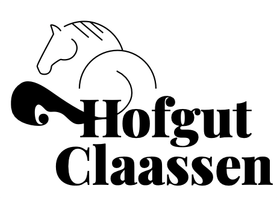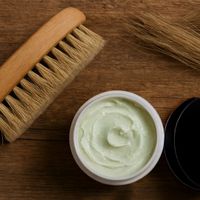Help with equine sarcoids – what you can do
An equine sarcoid is not a harmless wart. It’s not eczema and it will not simply disappear. A sarcoid is a benign skin tumour. It does not metastasise, but it can grow locally, come back and be very persistent. Many owners try home remedies first. Some want to avoid surgery if possible and are looking for real experiences, not empty promises.
Sarkosense offers a natural skin-care option for horses with sarcoids and stressed skin – as support, not as a medical treatment.
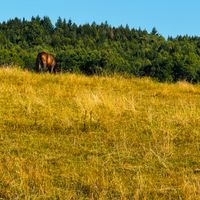
What is an equine sarcoid?
A sarcoid is a skin tumour in horses. It is not contagious from horse to horse like a classic infection, but it is stubborn and often returns.
It can look like a wart, a scabby wound or a lump under the skin. The exact type influences which treatment might be considered:
Occult:
hairless, flat, smooth or rough area
Verrucous:
wart-like, crusty
Nodular:
firm lump under the skin
Fibroblastic:
proud-flesh-like, often moist or bleeding
Mixed:
combination of several types
Malignant (rare):
grows over a large area, very aggressive locally
If you’re unsure what you’re dealing with, a veterinary diagnosis is essential.

What can influence a sarcoid?
The virus behind most sarcoids (BPV-1/2) is the same, but how a sarcoid behaves can be very different from horse to horse. Three areas play a role:
1. Immune system under pressure
Chronic stress, wound-healing problems or infections can weaken the body’s control over virus-related skin lesions.
2. Stressed skin & connective tissue
Rubbing tack, small wounds, fly bites or friction can irritate the area and make an existing sarcoid more active.
3. Metabolism out of balance
If important micronutrients (e.g. amino acids, zinc, antioxidants) are missing, the skin may regenerate more slowly. The environment around a sarcoid becomes less stable, even if this is not the root cause.
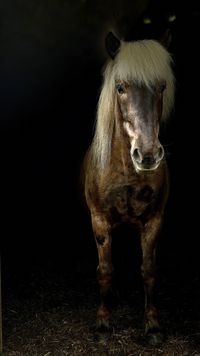
What do vets say?
Many owners hear things like: “You could try herpes cream.”“Some people use thuja tincture.”“We can tie it off and hope it doesn’t come back.” That is usually not a lack of interest – it is honest uncertainty.
There is no single standard therapy that works for all sarcoids. Decisions often depend on location, size, growth and the individual horse. In the end, many choices are left to the owner. With all the doubts and questions that come with it.
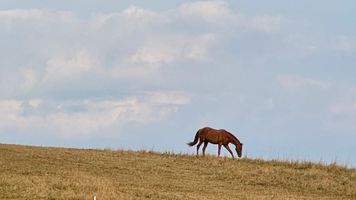
Which treatments exist?
And what is realistic?
Conventional methods
Surgery (excision):
Quick, but sarcoids can come back, especially if the margin is too small.
Laser or cryotherapy (freezing):
Precise techniques, often done in clinics, can be effective but are more invasive and costly.
Local chemotherapy:
Drugs injected directly into the sarcoid, always under veterinary supervision.
Topical prescription creams:
E.g. immune-modulating creams or caustic pastes. They can work, but may strongly irritate the skin.
Immunotherapy / radiotherapy:
Available in specialised clinics, expensive but helpful in selected cases.
Ligation (tying off):
Only suitable for specific, stalked sarcoids – and not without proper pain management and monitoring.
Alternative / supportive approaches
Homeopathy, thuja, globules:
Many anecdotal reports, few studies.
Creams, tinctures, herpes products:
Sometimes they soothe, sometimes they irritate – effects are hard to predict.
Natural skin-care products:
Aim to improve the local skin environment, protect the area, keep it dry and less inflamed.
No method can promise a cure. Often, a combination of veterinary treatment and good skin care works best.

Gentle alternatives to bloodroot ointments
Many owners come across so-called bloodroot salves when researching options. Some of these contain Sanguinaria canadensis (bloodroot). Depending on the concentration, such products can be very irritating and must be applied extremely precisely to avoid damaging surrounding skin.
Sarkosense from Hofgut Claassen
was developed as a mild, natural skin-care option: A powder that you mix with water into a paste applied like an ointment, that supports the surrounding skin and protects the area, made from natural ingredients, free from alcohol, fragrances and essential oils. It does not replace veterinary treatment, but it can support ongoing care.
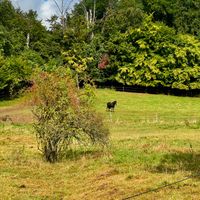
Using Sarkosense correctly – what really matters
The goal:
Dry out the lesion, protect the skin, support natural healing – without aggressive irritation.
Four principles make the difference:
No constant switching of methods
Today this cream, tomorrow another tincture – that often overloads the skin. Clear, consistent care works better than permanent experimentation.
Protect the surrounding skin – especially in summer
A drying sarcoid can temporarily look like an open wound. It’s important to protect both the lesion and the healthy skin around it, especially from flies and dirt. Sarkosense adheres well, forms a cover and does not irritate intact skin.
Be consistent
Only regular application creates the conditions for tissue to calm down and reorganise. Skipping days or stopping too early can set you back.
Observe changes – don’t stop too soon
First changes are often visible after a few days. Still, you should continue until the area is fully healed, dry and covered with healthy hair again. Photos can help you track the process without wishful thinking.
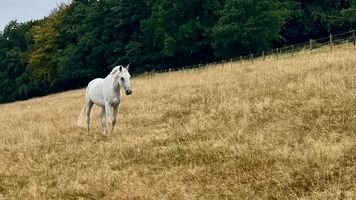
Questions we often get
“Will the sarcoid grow before it gets better?”
Sometimes it looks that way. Tissue can swell, soften or open before it dries and regresses.
Important: don’t stop just because it looks worse for a short time – unless your vet advises you to.
“Can I stop once it looks better?”
Only if the area is completely healed: dry skin, no active tissue, hair regrowing. Stopping at the “almost” stage can lead to new activity.
“Does it help every sarcoid?”
No – there is no guarantee. But: the more stable the horse’s general condition and the earlier you start, the better the chances.
“How long does it take?”
Visible changes may come quickly. Full regression can take weeks or months, depending on depth, location and reaction.
“Is it suitable for sensitive horses?”
Sarkosense was formulated to be gentle. Even in sensitive areas (belly, udder, sheath) we have good experience. If your horse reacts strongly, take a short break or reduce the frequency and discuss with your vet if needed.
“Can I combine it with other methods?”
Every additional measure means extra stimulus. Some horses cope better with one clear routine. If you combine, keep a close eye on what really helps – and what might be too much.
